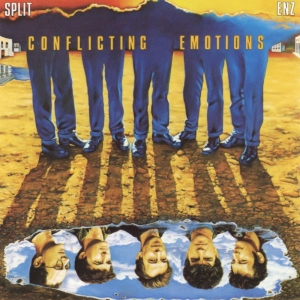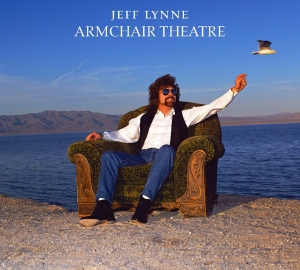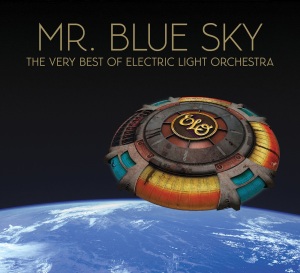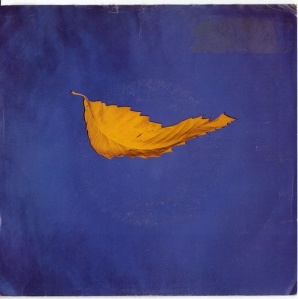
I’ve not written anything music related for a long time, not since Ian Broudie last released something new, in fact. I went to put pen to paper about Paul McCartney’s 2018 release Egypt Station, but I pretty much felt the same as everyone else – it’s an excellent release, but the internet doesn’t need another review saying pretty much the same thing as the others. That aside, music hasn’t excited me since I was a teenager in the 1990s and truth be told, nothing has really inspired me enough to write about it. So I did write about it but it’s taken until just after the first anniversary of the album’s release to actually put it out there because of one reason or another.
So, a flashback to 2021, and I heard a song being played on the radio. Once I heard the chiming guitars I immediately stopped what I was doing and listened. That’s not happened in a long while and it was refreshing that here was something that sounded different to the vast pool of mainstream music I’ve been subjected to in the last however many years. Those guitars sounded great, but so many times I’ve heard a great intro and wanted to switch the radio off as soon as the singer opens their mouth. The singer opened his mouth with a delightfully North East twang so I had to carry on listening. I don’t pay huge amounts of notice to the lyrics on listening to something for the first time, and the first thing I thought when the full band kicked in was “he’s listened to Bruce Springsteen”. Thumpy drums, a bit of saxophone and, best of all, the glockenspiel’s nod to Born To Run. Yeah, this was something good, this was going to be big. The DJ thought so too. The song, as I’m sure you’ve probably guessed by now, is Seventeen Going Under by Sam Fender. And it even has an obligatory woah-woah refrain to get the crowd singing along at gigs and festivals, something that I did at Finsbury Park.
I heard the song a good few times, enough to be won over completely by the melody and the playing. I delved into the lyrics, realising this is pretty much an autobiography condensed into five and a half minutes. Written in lockdown whilst Sam was in isolation, it deals with toxic masculinity, teenage angst, bullying and dealing with anger. The bit that really hits home hard is witnessing in words a seventeen year old Sam Fender dealing with a situation where his Mum had to give up work for health reasons. The Department for Work and Pensions didn’t give a flying fuck and he’s willing to do anything to keep a roof over their heads. Even if it meant resorting to shady dealings with shady people. These are lyrics forthright and honest. Personal, but not giving everything away.
Getting Started seems very much Seventeen Going Under chapter two. Here we find Sam still dealing with the situation with his Mum but a year on. But the message in this song is it doesn’t matter what you’re going through, or what may be happening around you, sometimes things get too much and you need a release. Life can be overwhelming, sometimes you have to let go and let off some steam. But there’s air of optimism. Steve Van Zandt has sung this song’s praises, and my God does this song take on another dimension performed live.
Elsewhere on the album we have some observations on the current climate. Aye is a ranty fucker of a tune that engages in societal issues whilst rocking out. It shows contempt for tax dodging billionaires, and touches on the division between rich and poor, the nitpicking and squabbling between the left and right and a lack of political identity and focus. In the current political state of this country, can you find a more relatable song out there presently? See also Long Way Off, which as the title suggests, we’re a long way off from an ideal political climate and right now in 2022 this seems even more apt. We have people, old and young, struggling to feed themselves or heat their homes, and in some cases having to make a decision to eat or heat. Foodbank use is at an all time high. “The hungry and divided play into the hands of the man who put them there”
Elsewhere on the album, Sam sings about insecurities and self esteem issues. Get You Down sees Sam delving right into the past and those issues from childhood rearing their ugly heads, which end up negatively impacting and sabotaging relationships. There is also an air of defeatism on the album, as he points out what he’s got wrong or done wrong. What really strikes me is Sam’s level of self awareness in his lyrics.
Spit of You is where it really hits home, though. Many people over the years have composed a Father and Son relationship song, but none of them have come close to this and none of them have I related to more. Much like the song implies, I can talk to my Dad at great lengths about cars and music and have a laugh. Inconsequential stuff, in the great scheme of things. I can’t talk to him about feelings or anything deep. Also, politically, we’re polar opposites. My Dad was brought up in Liverpool, so talking about feelings is an alien concept for men of a certain generation, especially those that hail from the North of England. My temperament is pretty similar, too. Many times the phrase “You’re just like your old man” has been thrown my way. But I’ve seen him say goodbye to his Mum, Dad and three of his brothers, and what breaks my fucking heart is one day that will be his forehead I’m kissing. And I’ll still look exactly like him. This song gets me in the feels every damn time, so as I’m sure you can imagine, I was a gibbering wreck when I saw him perform it live in Finsbury Park. Thankfully, I wasn’t the only 40-something year old bawling their eyes out at the concert.
Crying at a rock concert didn’t stop there, either. And nor does it when I listen to this album. If you’ve not listened to Dead Boys from Sam’s first album, it’s about the male suicides that happened in his home town and struggling to comprehend it. It’s one of the best songs on Hypersonic Missiles. One of Seventeen Going Under’s finest moments is The Dying Light, which is a sequel to Dead Boys. It’s sung from the point of view of someone who wants to end it all, and indeed, it was written when Sam was at one of his lowest points. However, the song is a triumph, a will to keep going if not for himself then for “mam and Dad and all my pals” and “for all the ones who didn’t make the night”. I’ve been at this point where there seemed no way out. So has my oldest and closest friend. And some of my other close friends have had loved ones who didn’t make the night. Dead Boys stopped someone from killing themselves, and this will have the same impact. And I’d like to take this opportunity to say if you’re in a bad place, please find a friend or someone who will listen and talk to them, let them help you. And if you’ve got a mate who is in a bad place, give them a hug. Make sure they know they’re important and that they’re loved. Let them talk to you and make sure you listen to them. It’s 2022, the stigma for mental health should be banished and the lack of acceptance for men sharing their feelings should be consigned to the bin, too.
With Seventeen Going Under, Sam wears his influences on his sleeve. It doesn’t break any new ground musically, but then again it doesn’t need to. What you do get is some cracking melodies that you’ll be humming for days and worldly wise lyrics, wise perhaps beyond his years and one of the most relatable long players I’ve heard in years. But it’s not just Sam that makes the record an absolute blinder. He’s got a damn good band with him, too, and what’s refreshing is they’re not just hired hands paid to play whatever music they’re given. These lot are a bunch of mates, and Dean (Thompson, guitarist) and Drew (Michael, drums) grew up with Sam. They were probably egging the local Co-Op together, lobbing bottles of Olivio and not paying for those pesky carrier bags making the shopkeeper sod off home to cower under his sofa.
So, what’s the album like a year on? What quite often happens with albums is there’s a honeymoon period where they are played repeatedly, lose their appeal and sit on the shelf for ages. Not so with Seventeen Going Under. I can play the album now, and still do with regularity, and it still sounds as good as it did and I simply don’t tire of it. The quality of the songs and the way I can relate to them will make sure this stays a regular play for many years to come. Especially as there’s been some brilliant memories made and now attached to this record with family and friends. Albums don’t come along like this that often, but it does make me look forward to see what that canny chanter from North Shields does next. Thanks Sam, the last 12 months has been a blast and Finsbury Park was epic.











